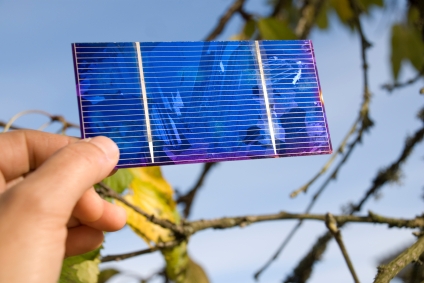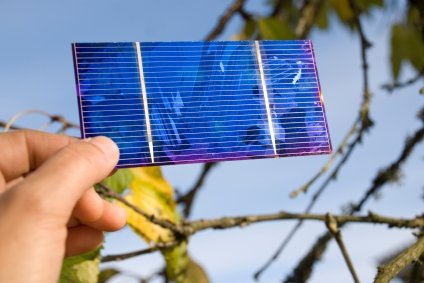Business Week has a provocative article this week by Michael Mandel on innovation — or the collapse of it — in America. According to Mandel, many of our current woes stem from a failure to innovate over the last decade since the glory years of the late 1990s. While most Americans still take pride in our innovation, Mandel provides some sobering statistics: the wages of young college graduates — precisely the group that should be succeeding in the information economy — declined 24% between 1998 and 2007. The U.S. trade balance in high tech goods flipped from a $30 billion surplus in 1998 to a $53 billion deficit in 2007. Mortality statistics actually worsened for those 45 to 54, belying talk of medical breakthroughs.
 All of this leads to my topic for today: making good on the promise of clean technology. Now one of the hottest areas in Silicon Valley and an area that the Obama Administration believes is key to powering prosperity, clean technology has — as John Doerr has said — more potential for wealth creation than information technology. Yet despite numerous technology breakthroughs, the clean energy and technology space has yet to generate the type of home runs on a company level or growth on an economy-wide level needed to reinvigorate the American economy and get wages moving upwards again.
All of this leads to my topic for today: making good on the promise of clean technology. Now one of the hottest areas in Silicon Valley and an area that the Obama Administration believes is key to powering prosperity, clean technology has — as John Doerr has said — more potential for wealth creation than information technology. Yet despite numerous technology breakthroughs, the clean energy and technology space has yet to generate the type of home runs on a company level or growth on an economy-wide level needed to reinvigorate the American economy and get wages moving upwards again.
In my view, there is no question that innovation is the key to America’s economic future. The wealthiest country in the world cannot compete with low-wages countries on labor costs. To sustain high wages, our people must create new industries in which competition is based on new capabilities and, in effect, scientific magic, not on who can make widgets for less. We have the best scientific infrastructure and system for financing innovation on earth. Nonetheless, as Mandel points out, our system has not delivered on an economy-wide level for the last decade.
It is tempting to blame this on the policies of the Bush Administration. And the Obama Administration has begun to reverse a reliance on financial engineering, as opposed to real engineering, to get us back in the business of creating new products. However, to really get innovation back into high gear, I believe more steps are needed.
Within clean technology, a very promising area of innovation is the smart grid. However, virtually none of the money for smart grid included in the ARRA bill will go to young entrepreneurs — burrito-eating Stanford grads, as Doerr once described them. Because of a 50% cost-sharing requirement and large average size for grants, most will go to large regulated utilities. Moreover, the entire clean energy industry is hampered by a key difference between the energy industry and, say the Internet industry: the presence of incumbent players with an interest not in innovation but rather in preserving incumbency.
Many young clean technology companies find themselves in the role of selling to a small group of customers, most heavily regulated and unusually conservative. In a given geographic region, they may therefore have only one customer, creating a so-called monopsomy. Monopsomies, the flip side of monopolies, provide exceptional buying power to a single gatekeeper who can, if desired, not buy a product at all. A real life example of a monopsomist is a coffee buyer in a remote region who may have virtually unlimited power over small growers. Oil companies, similarly, enjoy government tax credits, market power and other incumbent advantages that can work against companies offering alternative technologies. So long as these sorts of gate-keepers and roadblocks to innovation exists, clean energy will fail to realize its promise.
What is the way around roadblocks to innovation in the energy sector? The answer, broadly speaking, is to get the end user or consumer involved.
The consumer is a great arbiter of product quality. Unlike a middleman, incumbent or gatekeeper, the consumer’s highest priority is features for money expended. In software, computers, electronics and sectors where the consumer is empowered, the consumer has driven innovation.
Two policy ideas stand out as ways to get the consumer involved in energy decision making. First, the smart grid itself, if developed in an open way, will drive innovation by allowing software developers, producers of services and others to build products around an open standard. On the other hand, the smart grid, if developed in a closed or proprietary way, will merely perpetuate the market power of insiders. The key is to set a standard that allows plug and play capability so that entrepreneurs can develop products for customers around it. Just as coffee consumers, once informed about fair trade, have begun to buy fair trade coffee, consumers, if given the choice, will buy products and services around the grid based on their preferences.
Second, it is time to revisit the issue of electricity reform to offer greater choice to consumers. Electricity reform began in the 1990s but came to a halt. Since then, we have learned what structures make markets work best and competition should be extended to the consumer level.
Finally, the government should be more flexible in how it supports research and development for clean technologies, to make more money available to smaller, more nimble firms as opposed to entrenched incumbents. While it may be possible for governments playing catch up to to bet on strategic industries, as Japan did after World War II, when it comes to innovation, picking winners should be avoided. No single analyst or committee, no matter how smart, can substitute for trial, error and the verdict of the marketplace. However, government can encourage open standards and a level playing field to encourage numerous solutions to problems. And by making money generally available not only to large players but to small ones, it can help rekindle innovation.
These three steps will help accelerate innovation in the clean technology space. And innovation is what is needed to raise wages, create jobs and get America’s economic engine hitting on all cylinders once again.
Cross-posted at the NDN Blog.




